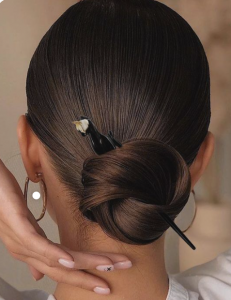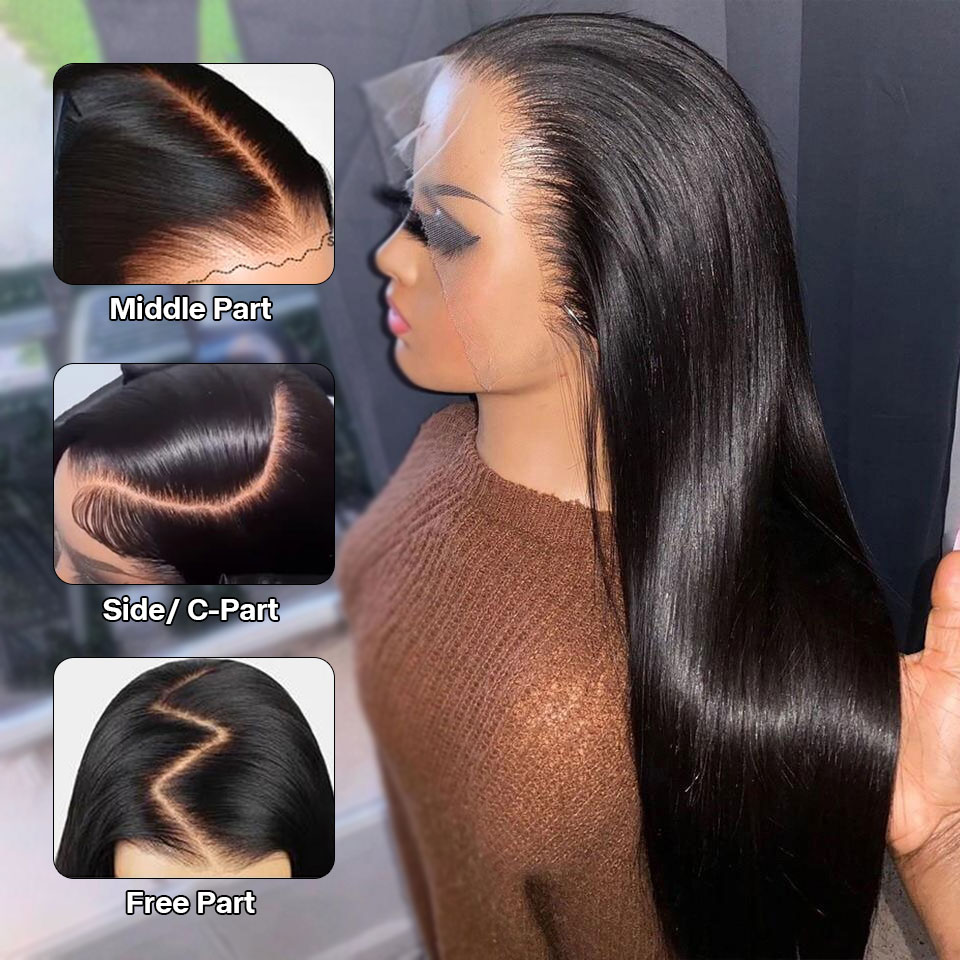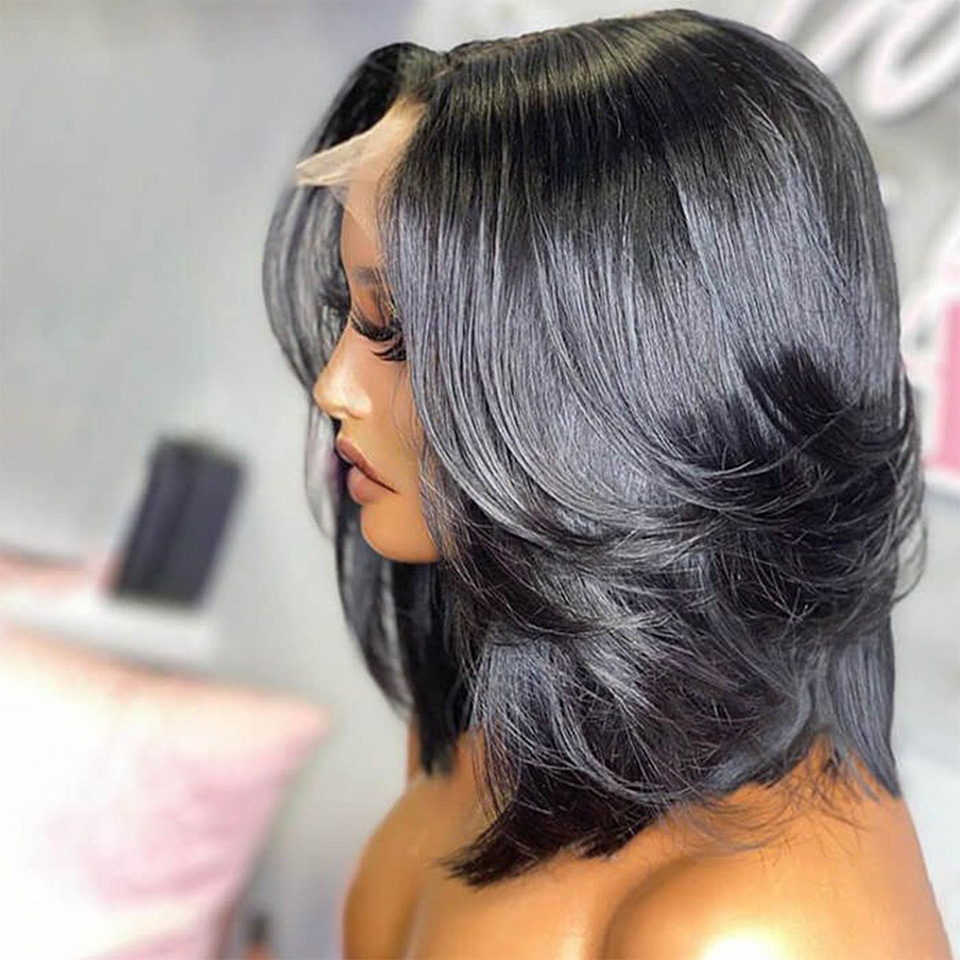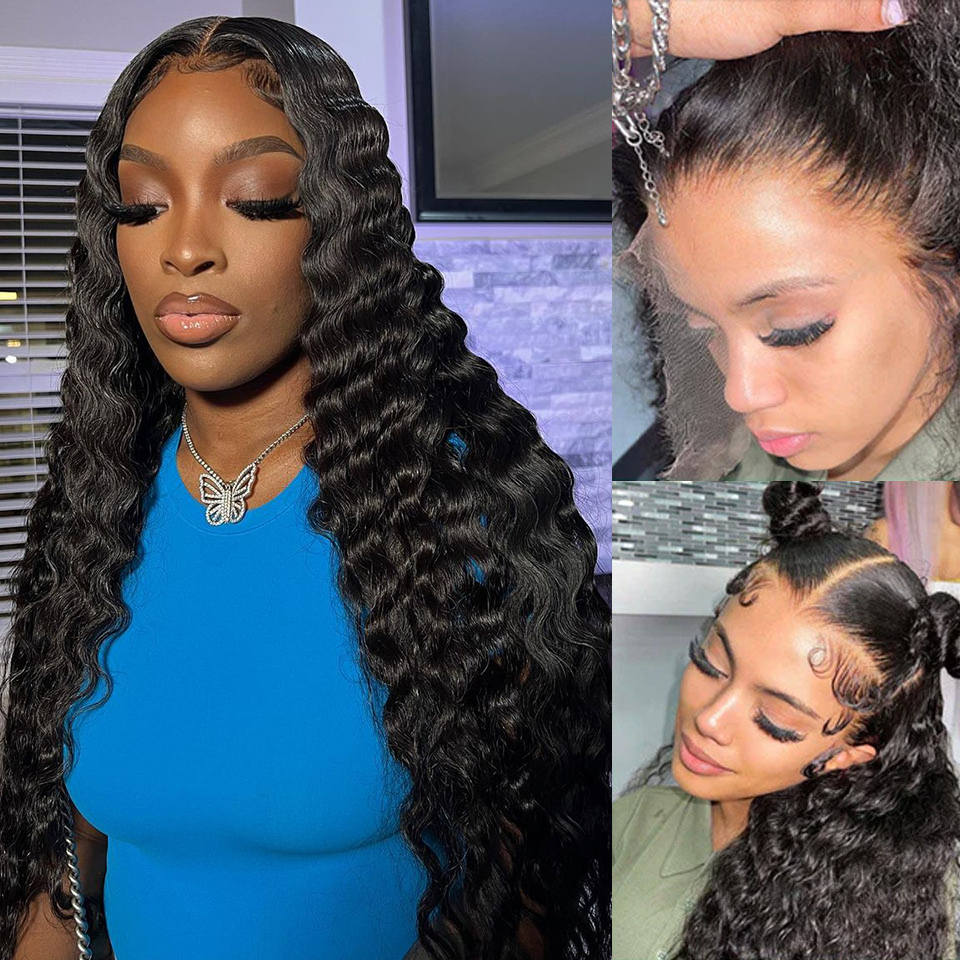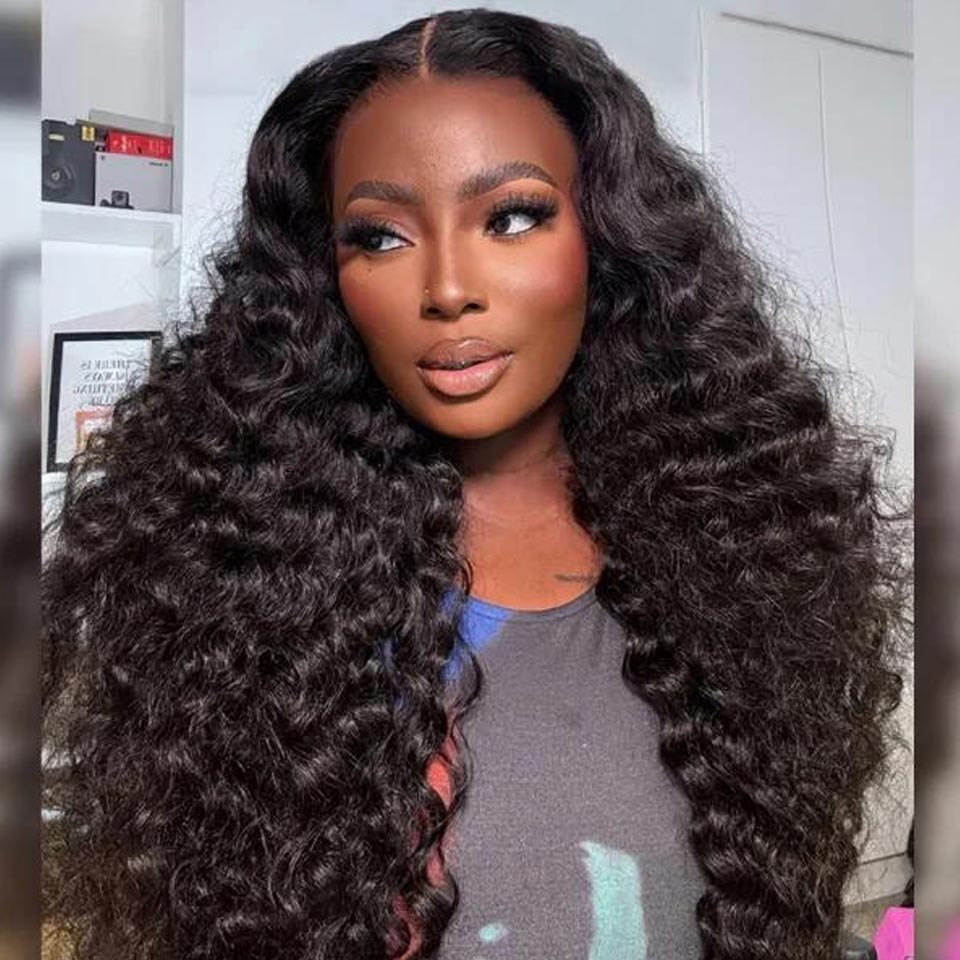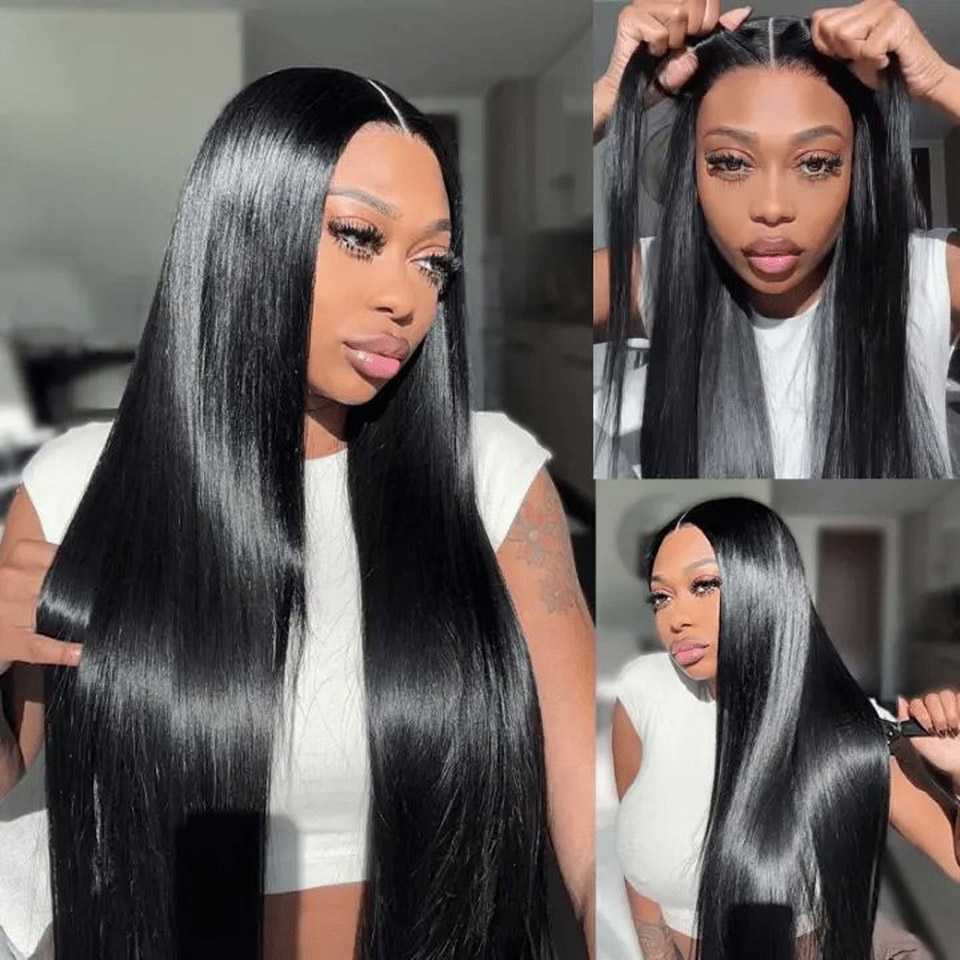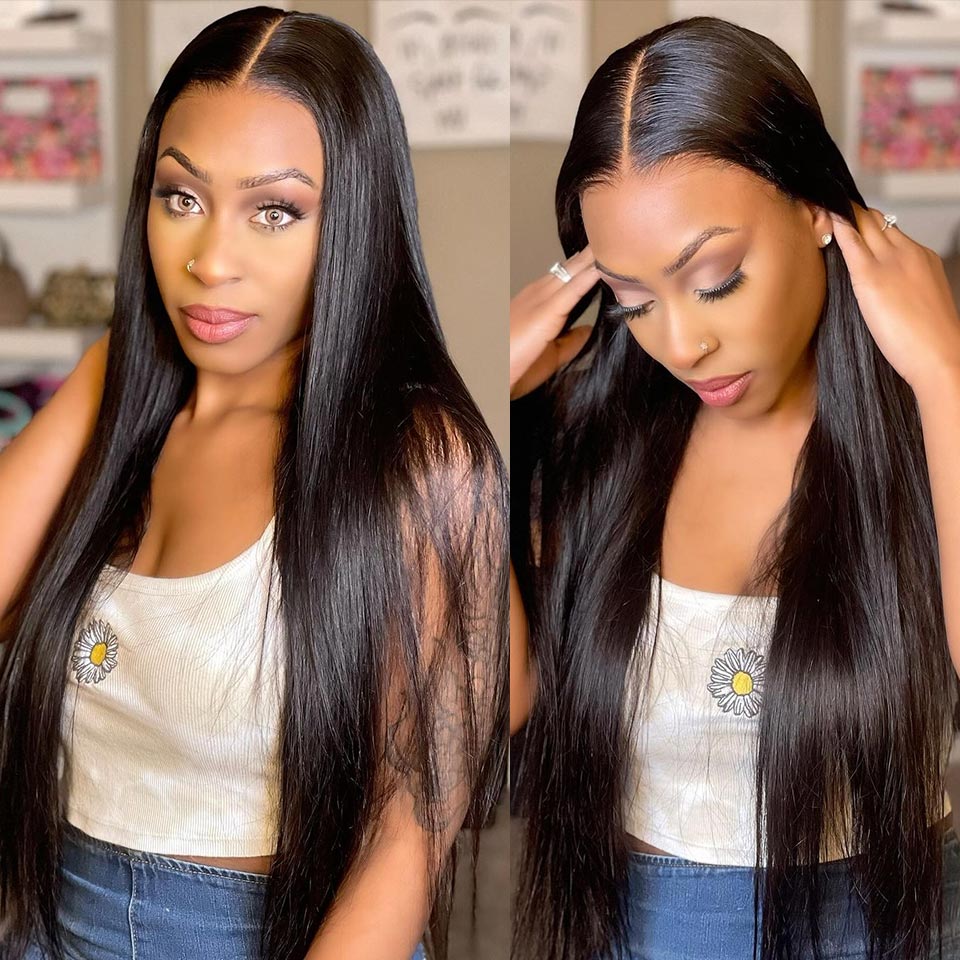Wigs are a popular choice for those seeking a versatile and convenient way to change their hairstyle. Whether it’s for fashion, medical reasons, or simply for fun, wigs allow us to experiment with different looks effortlessly. However, over time, wigs can become tangled and difficult to manage. Properly detangling a wig is essential to maintain its quality and prolong its lifespan. In this comprehensive guide, we will walk you through the step-by-step process of detangling a wig effectively, ensuring that it remains beautiful and ready to wear.
I. Understanding Wig Fibers.
Wigs come in various materials, each with its own unique characteristics and care requirements. Understanding the different types of wig fibers is essential when it comes to detangling and maintaining your wig. Let’s explore the three main types of wig fibers: synthetic fibers, human hair wigs, and heat-friendly synthetic wigs.
Synthetic Fibers:
Synthetic wigs are made from artificial fibers, typically composed of plastic or acrylic materials. These wigs are affordable, easy to maintain, and come in a wide range of styles and colors. Synthetic fibers are designed to mimic natural hair, but they have different properties and care needs.
When detangling a synthetic wig, it’s important to be gentle to prevent damage. Use specialized brushes or combs designed for synthetic hair to avoid causing frizz or static. It’s also crucial to avoid using heat styling tools on synthetic wigs, as they can melt the fibers.
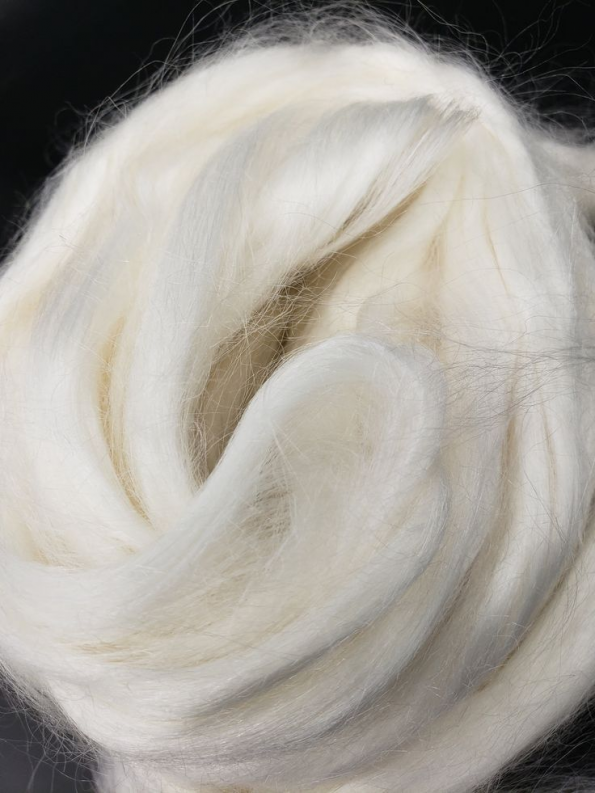
Human hair wigs are made from real human hair, offering the most natural look and feel. These wigs can be styled, colored, and treated like natural hair, providing versatility and durability. However, they require more care and maintenance compared to synthetic wigs.
Detangling a human hair wig is similar to detangling natural hair. You can use a wide-tooth comb or brush, starting from the ends and working your way up to prevent unnecessary pulling and breakage. Human hair wigs may benefit from deep conditioning treatments to keep the hair strands smooth and manageable.
Heat-Friendly Synthetic Wigs:
Heat-friendly synthetic wigs, also known as heat-resistant wigs, are a blend of synthetic and human hair fibers. These wigs offer the flexibility to use heat styling tools at lower temperatures to achieve different hairstyles. However, they still require careful handling to maintain their quality.
When detangling heat-friendly synthetic wigs, treat them similar to regular synthetic wigs. Avoid excessive heat exposure, and use heat styling tools sparingly and at lower settings. It’s essential to follow the manufacturer’s instructions regarding heat usage to prevent damage to the fibers.
II. Tools and Products Needed.
To effectively detangle a wig, it’s essential to have the right tools and products on hand. These items will help make the detangling process easier and more efficient. Here are the tools and products you’ll need:
Wide-Tooth Comb: A wide-tooth comb is a must-have tool for detangling wigs. It helps separate the strands without causing excessive pulling or breakage. Look for a comb with wide-spaced teeth to prevent snagging and tangling.
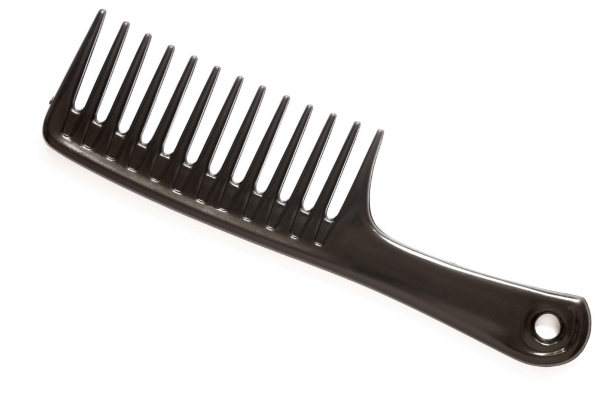
Detangling Brush: A detangling brush is another useful tool, especially for synthetic wigs or wigs with stubborn tangles. These brushes typically have flexible bristles that glide through the hair, minimizing damage. Choose a brush specifically designed for wigs to ensure gentle detangling.
Spray Bottle: Fill a spray bottle with water to lightly mist the wig before detangling. Moistening the hair helps soften the fibers and makes them more pliable, reducing the risk of breakage during the detangling process.
Wig Detangling Spray: A wig detangling spray can be a valuable addition, especially for wigs with severe tangles or knots. These sprays contain conditioning agents that help loosen the knots and make the hair more manageable. Look for a spray specifically formulated for wigs.
Conditioner: A good-quality wig conditioner is essential for maintaining the softness and manageability of the hair fibers. Choose a conditioner that is compatible with your wig type, whether synthetic or human hair. Avoid using regular hair conditioners, as they may contain ingredients that can weigh down or damage the wig.
Adhesive Remover or Rubbing Alcohol: If your wig has adhesive or tape residue, you may need an adhesive remover or rubbing alcohol to help remove it safely. These products dissolve the adhesive, allowing you to gently lift it off the wig without causing damage.
Wig Stand or Mannequin Head: A wig stand or mannequin head provides stability and support during the detangling process. It allows you to work on the wig more easily and keeps it in shape while you detangle and style. This is particularly useful when working with longer wigs.
Clips or Hair Ties: Dividing the wig into smaller sections makes the detangling process more manageable. Use clips or hair ties to separate the hair into sections, allowing you to focus on one area at a time and ensuring that no tangles are missed.
Optional: Leave-In Conditioner or Wig Revitalizing Spray: After detangling, you may want to use a leave-in conditioner or wig revitalizing spray to keep the hair fibers hydrated and refreshed. These products add moisture and help prevent future tangles.
III. Preparing the Wig.
Before you begin the detangling process, it’s important to properly prepare the wig to ensure an easier and more effective detangling experience. Taking the time to prepare the wig will help prevent further damage and tangling. Follow these steps to prepare your wig for detangling:
Remove Any Accessories:
If your wig has any accessories, such as clips, pins, or ribbons, gently remove them before starting the detangling process. This will prevent any tangling or snagging that may occur during detangling.
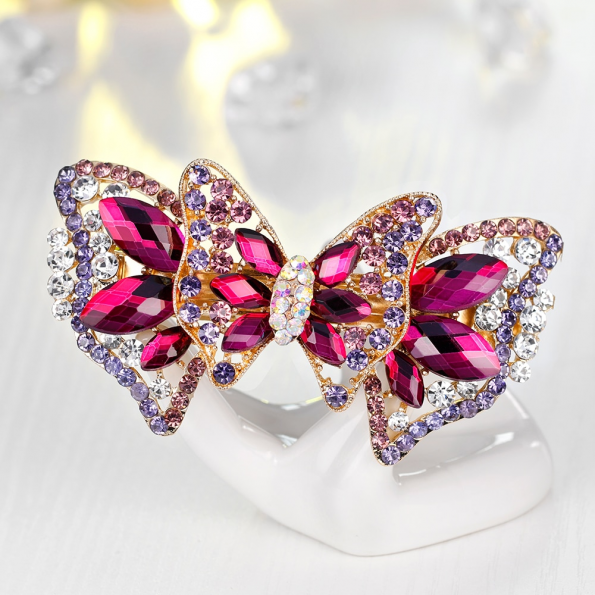
Gently Brush the Wig:
Using a wide-tooth comb or a specialized wig brush, gently brush the wig from the ends to the roots. Start detangling the ends first and gradually work your way up to the roots. This helps remove any loose tangles and makes the detangling process easier.
Prepare a Wig Stand or Mannequin Head:
Place a wig stand or a mannequin head on a stable surface. This will provide support and stability while you detangle the wig. If using a wig stand, make sure it has an adjustable head size to fit your wig securely.
Secure the Wig on the Stand:
Carefully place the wig on the stand or mannequin head. Use the adjustable straps or pins provided with the stand to secure the wig in place. Ensure that the wig is evenly positioned and the cap is stretched out to avoid any folds or creases.
Optional: Use a Wig Cap:
If desired, you can wear a wig cap underneath the wig. A wig cap helps to keep your natural hair secure and provides a smooth surface for the wig to rest on. It can also help prevent your natural hair from getting tangled with the wig during the detangling process.
IV. The Detangling Process.
Now that you have prepared your wig, it’s time to start the detangling process. Remember to be patient and gentle throughout the process to avoid damaging the wig fibers. Follow these steps to effectively detangle your wig:
Wetting the Wig:
If you haven’t already, lightly mist the wig with water from a spray bottle. This will help to further soften the hair fibers and make them more pliable for detangling. Ensure that the wig is damp but not dripping wet.
Applying a Detangling Spray:
If you’re dealing with particularly stubborn tangles, you can use a wig detangling spray. Spray a small amount onto the tangled areas and allow it to sit for a few minutes. The detangling spray will help to loosen the knots and make the hair more manageable.
Detangling with Fingers:
Begin the detangling process by using your fingers to gently separate any large knots or tangles. Start from the ends of the hair and work your way up towards the roots. Use a gentle pulling motion to tease apart the tangled strands. Be patient and avoid using excessive force, as this can lead to hair breakage.
Using a Wide-Tooth Comb:
Once you have worked through the larger tangles with your fingers, switch to a wide-tooth comb. Start combing from the ends of the hair, holding the hair above the tangle with your free hand to provide support. Slowly work your way up, applying gentle pressure to detangle the hair. If you encounter resistance, stop and work through the tangle with your fingers before continuing combing.
Brushing with a Detangling Brush:
For synthetic wigs or wigs with more stubborn tangles, you can use a specialized detangling brush. These brushes have flexible bristles that glide through the hair without causing excessive pulling or breakage. Start brushing from the ends of the hair and work your way up towards the roots. Take your time and be gentle to prevent any damage.
Working in Sections:
To make the detangling process more manageable, divide the wig into smaller sections using clips or hair ties. This allows you to focus on one section at a time and ensures that you don’t miss any tangles. Detangle each section individually using the above methods, working systematically through the wig.
Dealing with Stubborn Tangles:
If you encounter a particularly stubborn tangle that is difficult to remove, apply a small amount of conditioner or wig detangling spray directly to the knot. Use your fingers or a comb to gently work through the tangle, starting from the ends and gradually working upwards. Take your time and be patient, applying more product if necessary.
Avoiding Excessive Force:
Throughout the detangling process, it’s crucial to avoid using excessive force or pulling on the hair. Be patient and gentle, taking breaks if needed. If you encounter a knot or tangle that is not budging, stop and reassess the situation. Applying more water, detangling spray, or conditioner can help loosen the tangle and make it easier to detangle.
V. Washing and Conditioning.
After successfully detangling your wig, it’s important to proceed with the washing and conditioning process. This step helps to remove any product buildup, dirt, or oils that may have accumulated in the wig fibers. Proper washing and conditioning will restore the wig’s freshness and maintain its overall quality. Follow these steps to wash and condition your wig:
Preparing the Wig for Washing:
Fill a sink or basin with lukewarm water. Avoid using hot water as it can damage the wig fibers. If the wig has any adhesive or tape residue, apply a small amount of adhesive remover or rubbing alcohol to gently remove it. Carefully submerge the wig into the water, ensuring it is fully immersed.
Washing the Wig:
Add a small amount of mild shampoo to the water and gently swirl it around to create a lather. Avoid rubbing or twisting the wig, as this can cause tangling. Instead, carefully agitate the water with your fingers to cleanse the wig. Pay extra attention to the inside cap and the nape area, as they tend to accumulate more oils and sweat.
Conditioning the Wig:
Rinse the wig thoroughly with lukewarm water to remove any traces of shampoo. After rinsing, apply a small amount of conditioner to your hands and distribute it evenly throughout the wig. Focus on the mid-lengths and ends, as they tend to be drier. Avoid applying conditioner directly to the wig cap or roots, as this can cause the wig to become greasy.
Rinsing and Drying the Wig:
Once the conditioner is evenly distributed, rinse the wig with lukewarm water until all the conditioner is removed. Gently squeeze out any excess water from the wig, taking care not to wring or twist it. Place the wig on a clean towel and pat it dry to remove additional moisture. Avoid rubbing the wig vigorously, as this can cause frizz and tangles.
Air Drying the Wig:
Place the wig on a wig stand or mannequin head to air dry. Avoid using heat sources such as blow dryers or direct sunlight, as they can damage the wig fibers. Allow the wig to dry naturally, preferably in a well-ventilated area. It’s best to let the wig dry overnight to ensure it is completely dry before styling or storing.
Optional: Apply Leave-In Conditioner:
Once the wig is dry, you can apply a leave-in conditioner to keep the hair fibers soft and manageable. Spray a small amount of leave-in conditioner onto the wig and distribute it evenly with your fingers or a wide-tooth comb. This step adds extra moisture and helps to detangle the wig.
VI. Post-Detangling Maintenance.
After detangling, washing, and conditioning your wig, there are some important post-detangling maintenance steps to follow. These steps will help ensure that your wig remains in optimal condition and stays tangle-free for longer periods. Here’s what you need to do:
Styling with Caution:
Once your wig is clean and conditioned, it’s time to style it. Whether you prefer to wear it straight, curly, or in a specific hairstyle, it’s important to handle the wig with care. Avoid excessive heat styling, as it can damage synthetic fibers or human hair. If you must use heat styling tools, make sure to use a heat protectant spray and set the tools to low or medium heat settings.
Avoiding Excessive Friction:
Friction can cause tangles and frizz, so it’s crucial to minimize it as much as possible. When wearing your wig, be mindful of activities that can create friction, such as rubbing against clothing collars or rough surfaces. Opt for smooth fabrics and avoid wearing hats or headbands that could cause the wig to rub against them. Additionally, avoid sleeping with your wig on, as this can lead to tangling.
Regular Brushing:
Regular brushing is essential for maintaining a tangle-free wig. Use a wide-tooth comb or a wig brush specifically designed for your wig type. Brush the wig starting from the ends and work your way up to the roots, using gentle, downward strokes. This helps to remove any potential tangles or knots that may have formed since the last detangling session.
Storage:
Proper storage is crucial to prevent tangling and maintain the shape of your wig. When not in use, store your wig on a wig stand or a mannequin head to preserve its style and shape. Before storing, ensure the wig is completely dry to avoid any mold or mildew growth. Use a breathable wig cap or a hair net to protect the wig from dust and keep it in a cool, dry place away from direct sunlight.
Avoiding Harsh Chemicals:
When styling or refreshing your wig, avoid using harsh chemicals or hair products that can cause buildup or damage the wig fibers. Stick to wig-friendly products, such as wig sprays, leave-in conditioners, and styling products specifically formulated for wigs. These products are designed to be gentle on the fibers and help maintain the wig’s quality.
Scheduled Maintenance:
Regular maintenance sessions are essential to keep your wig looking its best. Schedule periodic detangling and cleaning sessions based on your wig usage and personal preference. It’s recommended to detangle and wash your wig every 10-15 wearings, but adjust the frequency depending on how often you wear it and the condition of the wig.
VII. Special Considerations for Different Wig Types.
Different wig types require specific care and maintenance to keep them in optimal condition. Whether you have a synthetic wig or a human hair wig, understanding the unique needs of each type will help you properly care for and detangle your wig. Here are some special considerations for different wig types:
Synthetic Wigs:
Synthetic wigs are made from synthetic fibers, such as acrylic, polyester, or kanekalon. When detangling synthetic wigs, it’s important to be gentle and avoid excessive heat, as synthetic fibers are sensitive to high temperatures. Here are some additional tips for caring for synthetic wigs:
Use a wide-tooth comb or a detangling brush specifically designed for synthetic wigs to prevent damage to the fibers.
Avoid using regular shampoos and conditioners, as they can cause buildup and damage the synthetic fibers. Instead, opt for wig-specific shampoos and conditioners formulated for synthetic hair.
Do not use heated styling tools on synthetic wigs unless they are specifically labeled as heat-friendly. Excessive heat can melt or damage the synthetic fibers.
Avoid exposing synthetic wigs to direct sunlight for extended periods, as it can cause color fading and fiber deterioration.
Human Hair Wigs:
Human hair wigs are made from natural human hair and require special care to keep them looking their best. When detangling human hair wigs, it’s important to treat them with care to prevent damage and preserve the hair’s integrity. Consider the following tips for caring for human hair wigs:
Use a wide-tooth comb or a brush with soft bristles to detangle human hair wigs gently. Start from the ends and work your way up to avoid excessive pulling or breakage.
Use sulfate-free and paraben-free shampoos and conditioners formulated for human hair wigs. These products will help retain the hair’s moisture and prevent drying.
Deep condition human hair wigs regularly to keep the hair hydrated and soft. Leave the conditioner on for a few minutes before rinsing it out thoroughly.
Human hair wigs can be styled with heat tools, but it’s important to use a heat protectant spray and set the tools to a low or medium heat setting to prevent damage.
Human hair wigs can benefit from regular moisturizing and oiling to keep the hair soft and nourished. Use lightweight hair oils or serums specifically designed for human hair.
Heat-Friendly Synthetic Wigs:
Some synthetic wigs are labeled as heat-friendly and can withstand low to medium heat styling. If you have a heat-friendly synthetic wig, follow these additional tips:
Use heat styling tools sparingly to avoid damage to the synthetic fibers. Limit heat styling to occasional use and always use a heat protectant spray.
When using heat tools, set them to the lowest possible heat setting to minimize the risk of melting or damaging the synthetic fibers.
Avoid excessive brushing or combing while the wig is still hot from heat styling, as this can cause the fibers to stretch or break.
By understanding the specific needs of different wig types, you can ensure that you’re providing the appropriate care and maintenance for your wig. Whether it’s a synthetic wig, a human hair wig, or a heat-friendly synthetic wig, following these considerations will help you detangle and care for your wig effectively, prolonging its lifespan and maintaining its natural beauty.
Wrap up.
Maintaining a wig’s quality and appearance begins with proper detangling. By following the step-by-step process outlined in this ultimate guide, you can ensure that your wig remains tangle-free, easy to style, and lasts for an extended period. Remember to be gentle and patient during the detangling process, as excessive force can damage the wig fibers. Additionally, regular maintenance and proper storage techniques will help to prevent tangling and keep your wig in excellent condition. With these tips and tricks, you’ll have the confidence to detangle your wig with ease, keeping it looking fresh and fabulous for all your styling needs.







